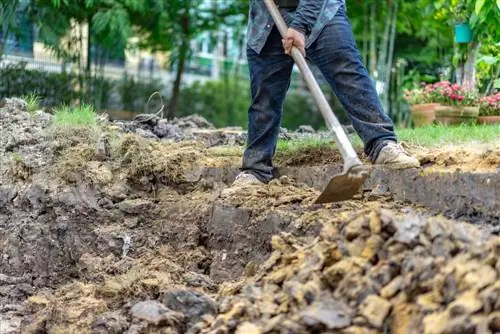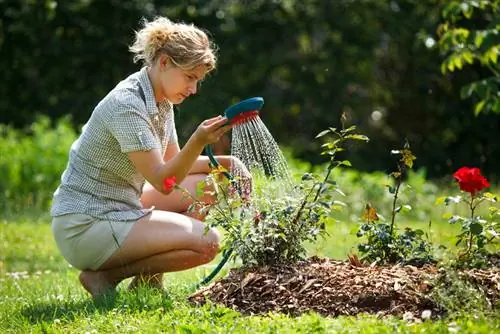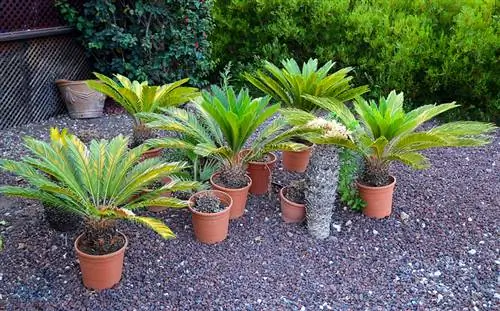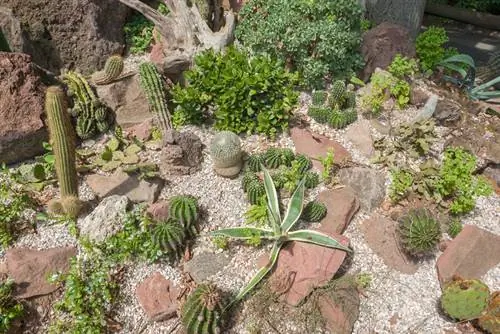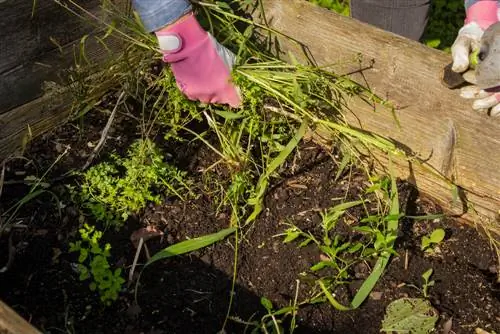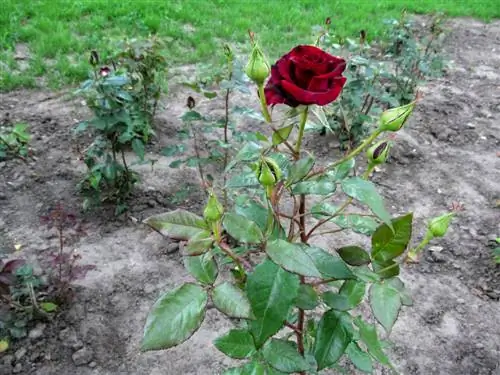- Author admin [email protected].
- Public 2024-01-05 20:48.
- Last modified 2025-01-23 11:21.
Before a rose bed can be planted, the soil must be prepared accordingly. Although roses are not particularly demanding when it comes to soil, there are still a few points that should be taken into account when preparing the rose bed.
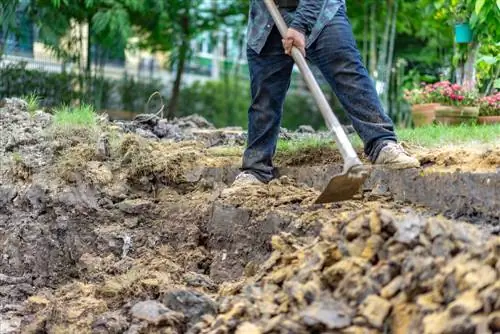
How do I properly prepare a rose bed?
To optimally prepare a rose bed, remove plant residues, loosen the soil to a depth of at least 50 cm and mix in nutrient-rich garden soil. Test and regulate pH (6-7) by adding conifers and horn shavings.
What soil do roses like?
Roses grow quite well in most soils, although they prefer
- slightly sour,
- permeable and
- nutrient-rich soils.
Testing and adjusting the pH value
If you want to give your roses the best possible start, you should test the pH of the soil before planting the rose bed and adjust it if necessary. You can purchase the corresponding test strips (€2.00 at Amazon) online or in garden shops. The pH value should be between 6 and 7. If the soil is too alkaline, you can mix chopped conifers mixed with horn shavings into the soil. If you still have time before the bed is created, you can also dig peat into the ground. The bed should then rest for a few weeks.
Create loose soil
Roses have deep roots, but are not the strongest. Therefore, you should help by loosening the soil well. The best way to do this is to mill the entire rose bed at least 50cm deep. Alternatively, you can dig it up, which is of course more work and takes longer.
Nutritious soil
Roses are very sensitive to s alts in the soil. Therefore, it is not recommended to enrich the soil with compost. Instead, mix well, nutrient-rich garden soil into the existing soil.
Roses don't grow on roses
Roses are heavy feeders and need a lot of nutrients. Therefore, they need to be fertilized several times a year. In addition, roses cannot easily be planted in a place where roses or other heavy feeders such as brassicas have already stood. In such a case, remove old rose bushes or plant remains from the heavy feeders and then dig the area generously out of. Use this soil somewhere else and replace it with fresh, nutrient-rich garden soil.
Prepare the rose bed step by step
With this prior knowledge, proceed as follows:
- Remove plant debris, grass, weeds, stones and other things from the bed.
- Measure the pH of your rose bed. If necessary, add some shredded conifers with horn shavings to the bed.
- Apply a layer of fresh garden soil several centimeters thick to the rose bed.
- Milling or digging the entire area at least half a meter deep, mixing the old garden soil with the new soil.
- Level the soil with a rake.

